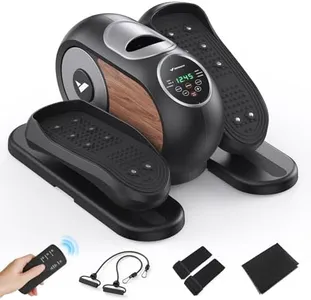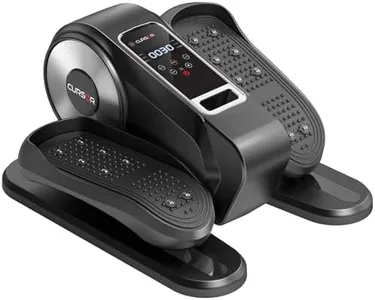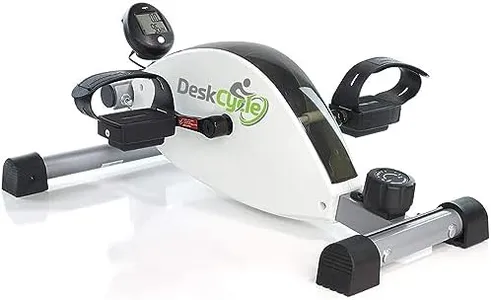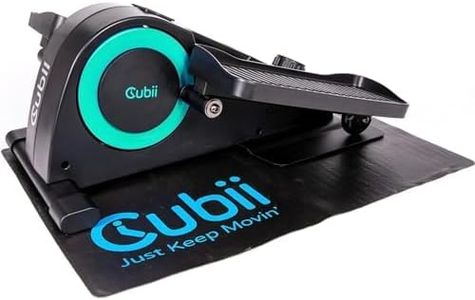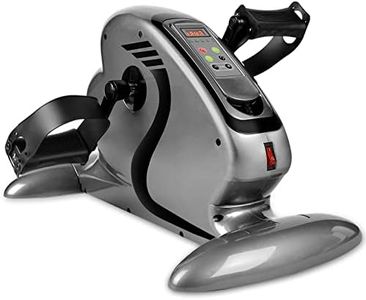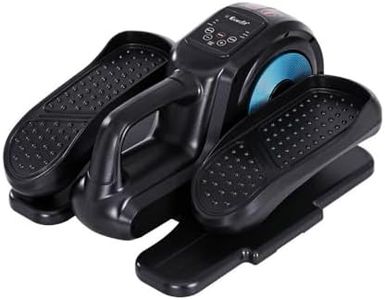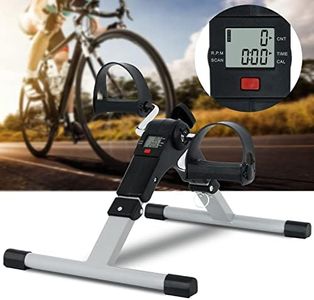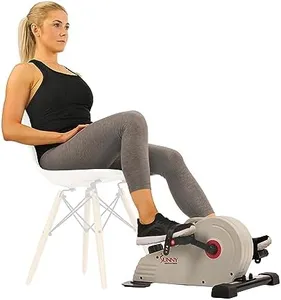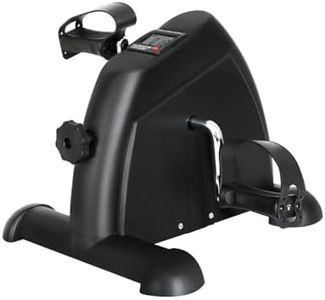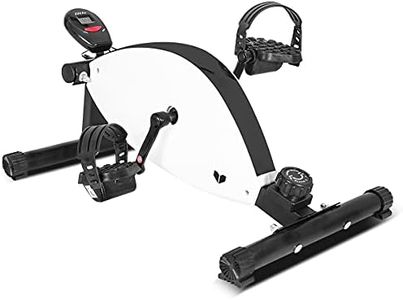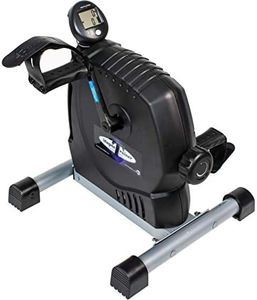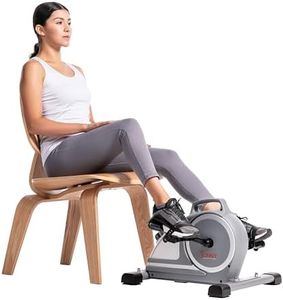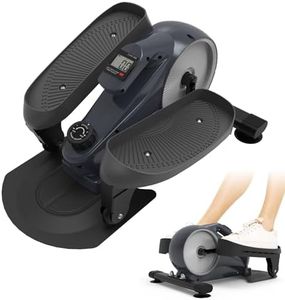We Use CookiesWe use cookies to enhance the security, performance,
functionality and for analytical and promotional activities. By continuing to browse this site you
are agreeing to our privacy policy
10 Best Pedal Exercisers
From leading brands and best sellers available on the web.Buying Guide for the Best Pedal Exercisers
Pedal exercisers are compact machines that allow you to exercise your legs (and sometimes arms) by pedaling, similar to cycling but while sitting on a chair or at a desk. They’re excellent for people wanting low-impact exercise at home, those with limited mobility, or anyone looking for a convenient way to stay active. When choosing a pedal exerciser, it's important to focus on features that match your physical needs, exercise goals, and available space. Understanding the main specs will help you make a choice that feels comfortable, safe, and motivating for regular use.Resistance TypeThis refers to how the device makes pedaling harder or easier. The two main types are mechanical (usually a tension knob controlling friction on a strap or belt) and magnetic resistance (using magnets to provide smoother and often quieter resistance). Mechanical resistance is common and generally affordable, but it might not feel as smooth and can sometimes be noisy. Magnetic resistance is quieter and smoother, which is nice if you want to use it while working, reading, or watching TV. If you are easily distracted by noise or want a more consistent, gym-like feel, look for magnetic resistance. For simple workouts, mechanical resistance is usually sufficient.
Size and WeightThis spec covers the overall dimensions and weight of the pedal exerciser. Smaller and lightweight models are easier to store and move, making them better for people with limited space or those who want to carry the exerciser from room to room. On the other hand, heavier models often sit more firmly on the floor, which can help with stability during intense pedaling. If you plan to use the exerciser in one place, a heavier model may feel sturdier and safer, while those needing portability or storage convenience might favor a more compact, lighter device.
Stability and Base DesignStability comes from the frame material, base width, and design features like rubber feet. A stable exerciser won’t wobble or slide when you’re pedaling, which is especially important if you plan to use it on smooth surfaces or during vigorous sessions. Wider bases and non-slip pads help prevent movement. People who want to use the device under a desk, or who will pedal a bit harder, should prioritize models advertised as especially stable.
Pedal DesignPedals should be large enough to fit your feet comfortably and may include straps to keep your feet in place. Some machines also allow you to use your hands with the pedals for an upper body workout. Look for pedals with a non-slip surface and adjustable straps, especially if you have mobility issues or will switch between different users. Wide pedals with good grip benefit those seeking extra comfort and safety.
Adjustable Resistance LevelsThis refers to the range and number of resistance settings you can choose. Some pedal exercisers offer only a few resistance levels, while others allow fine adjustments. If you're using the exerciser for rehab or light activity, a lower range of resistance is sufficient. If you want to build strength and stamina, look for more resistance options so you can gradually increase difficulty over time.
Display/MonitorMany pedal exercisers have a small digital display showing stats like time, speed, distance, or estimated calories burned. The usefulness of a display depends on whether you like tracking workout information or if you're exercising passively. If monitoring progress motivates you, opt for a clear, easy-to-read display. Those who prefer simple, distraction-free exercise can choose models without a monitor.
Noise LevelSome exercisers are noisier than others, which matters if you’ll be using it in shared spaces or while watching TV. Magnetic resistance systems are the quietest, while basic mechanical ones can hum or squeak a bit. If noise is a concern for you or your environment, seek out machines advertised as quiet or silent operation.
